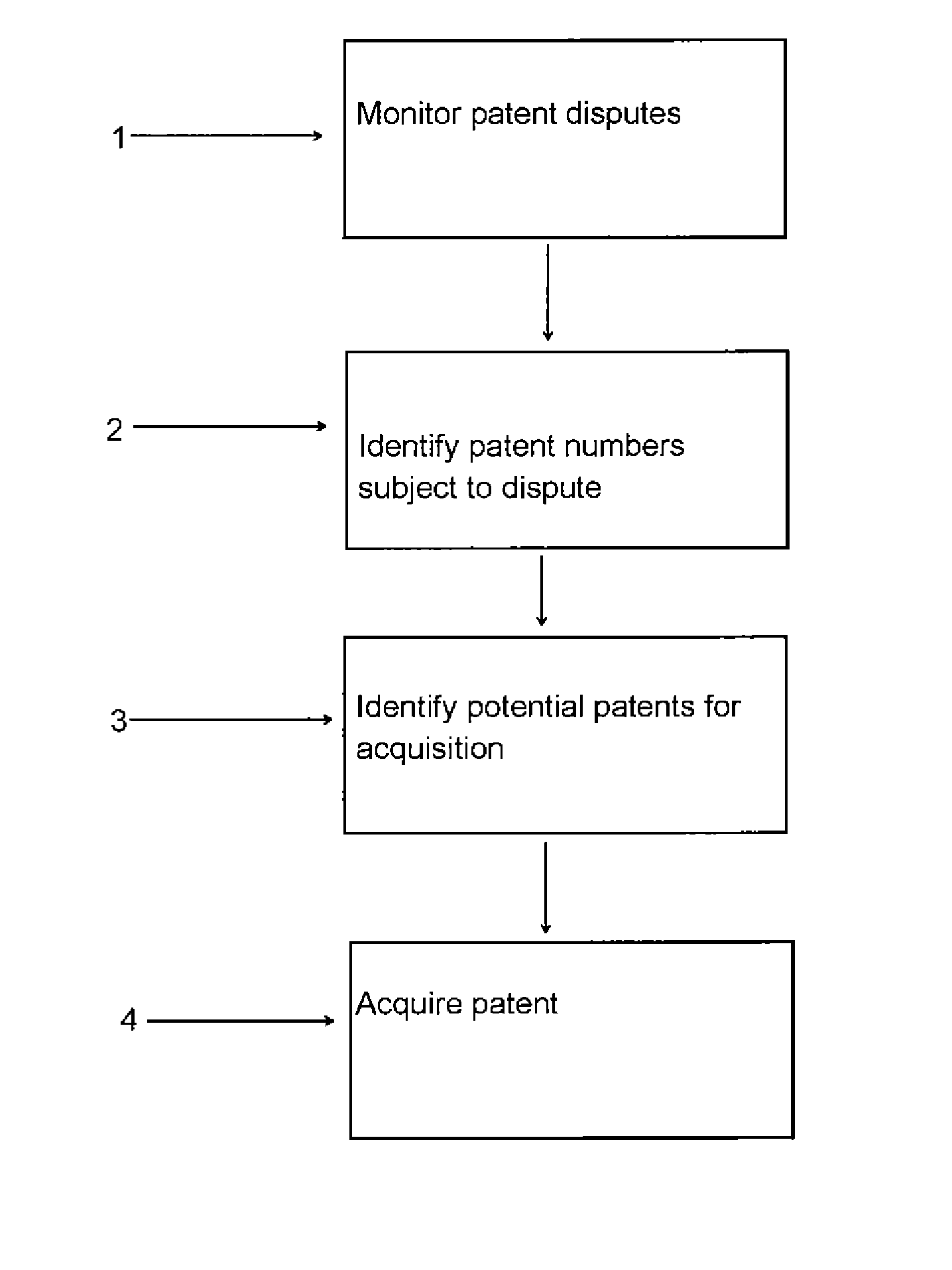Systems, Methods and Computer Program Products for Identifying a Potentially Valuable Patent for Acquisition
- Summary
- Abstract
- Description
- Claims
- Application Information
AI Technical Summary
Benefits of technology
Problems solved by technology
Method used
Image
Examples
Embodiment Construction
[0015]According to one embodiment, the present invention provides a method for identifying a patent of value for acquisition. According to this method, there is a first step of identifying a patent dispute in which an assertion of at least one of infringement, unenforceability or invalidity of a first patent has been made. After a first patent is identified, it may be used as a lead for identifying other patents that are related to the same subject matter and are potentially of value.
[0016]A “patent dispute” is a disagreement between two parties or among more than two parties as to one or more of infringement, validity or enforceability of a patent right. Examples of patent disputes include, but are not limited to: patent litigation, an arbitration proceeding, a mediation proceeding, an opposition proceeding, a revocation proceeding and a reexamination proceeding. Typically, at least one party to the dispute is an owner, co-owner or exclusive licensee of the patent. These proceeding...
PUM
 Login to View More
Login to View More Abstract
Description
Claims
Application Information
 Login to View More
Login to View More - R&D
- Intellectual Property
- Life Sciences
- Materials
- Tech Scout
- Unparalleled Data Quality
- Higher Quality Content
- 60% Fewer Hallucinations
Browse by: Latest US Patents, China's latest patents, Technical Efficacy Thesaurus, Application Domain, Technology Topic, Popular Technical Reports.
© 2025 PatSnap. All rights reserved.Legal|Privacy policy|Modern Slavery Act Transparency Statement|Sitemap|About US| Contact US: help@patsnap.com


